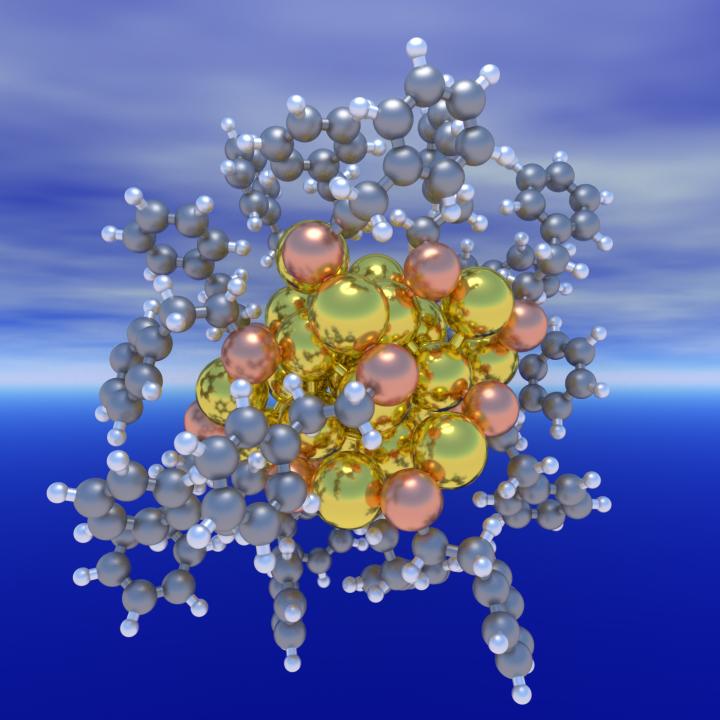It’s been a while since I first wrote this but I believe this situation has not changed.
There’s some consternation regarding the US Office of Science and Technology Policy’s (OSTP) diminishing size and lack of leadership. From a July 3, 2017 article by Bob Grant for The Scientist (Note: Links have been removed),
Three OSTP staffers did leave last week, but it was because their prearranged tenures at the office had expired, according to an administration official familiar with the situation. “I saw that there were some tweets and what-not saying that it’s zero,” the official tells The Scientist. “That is not true. We have plenty of PhDs that are still on staff that are working on science. All of the work that was being done by the three who left on Friday had been transitioned to other staffers.”
At least one of the tweets that the official is referring to came from Eleanor Celeste, who announced leaving OSTP, where she was the assistant director for biomedical and forensic sciences. “science division out. mic drop,” she tweeted on Friday afternoon.
The administration official concedes that the OSTP is currently in a state of “constant flux” and at a “weird transition period” at the moment, and expects change to continue. “I’m sure that the office will look even more different in three months than it does today, than it did six months ago,” the official says.
…
Jeffrey Mervis in two articles for Science Magazine is able to provide more detail. From his July 11, 2017 article,
…
OSTP now has 35 staffers, says an administration official who declined to be named because they weren’t authorized to speak to the media. Holdren [John Holdren], who in January [2017] returned to Harvard University, says the plunge in staff levels is normal during a presidential transition. “But what’s shocking is that, this far into the new administration, the numbers haven’t gone back up.”
The office’s only political appointee is Michael Kratsios, a former aide to Trump confidant and Silicon Valley billionaire Peter Thiel. Kratsios is serving as OSTP’s deputy chief technology officer and de facto OSTP head. Eight new detailees have arrived from other agencies since the inauguration.
Although there has been no formal reorganization of OSTP, a “smaller, more collaborative staff” is now grouped around three areas—science, technology, and national security—according to the Trump aide. Three holdovers from Obama’s OSTP are leading teams focused on specific themes—Lloyd Whitman in technology, Chris Fall in national security, and Deerin Babb-Brott in environment and energy. They report to Kratsios and Ted Wackler, a career civil servant who was Holdren’s deputy chief of staff and who joined OSTP under former President George W. Bush.
“It’s a very flat structure,” says the Trump official, consistent with the administration’s view that “government should be looking for ways to do more with less.” Ultimately, the official adds, “the goal is [for OSTP] to have “probably closer to 50 [people].”
…
A briefing book prepared by Obama’s outgoing OSTP staff may be a small but telling indication of the office’s current status. The thick, three-ring binder, covering 100 issues, was modeled on one that Holdren received from John “Jack” Marburger, Bush’s OSTP director. “Jack did a fabulous job of laying out what OSTP does, including what reports it owes Congress, so we decided to do likewise,” Holdren says. “But nobody came [from Trump’s transition team] to collect it until a week before the inauguration.”
That person was Reed Cordish, the 43-year-old scion of billionaire real estate developer David Cordish. An English major in college, Reed Cordish was briefly a professional tennis player before joining the family business. He “spent an hour with us and took the book away,” Holdren says. “He told us, ‘This is an important operation and I’ll do my best to see that it flourishes.’ But we don’t know … whether he has the clout to make that happen.”
Cordish is now assistant to the president for intragovernmental and technology initiatives. He works in the new Office of American Innovation led by presidential son-in-law Jared Kushner. That office arranged a recent meeting with high-tech executives, and is also leading yet another White House attempt to “reinvent” government.
…
Trump has renewed the charter of the National Science and Technology Council, a multiagency group that carries out much of the day-to-day work of advancing the president’s science initiatives. … Still pending is the status of the President’s Council of Advisors on Science and Technology [emphasis mine], a body of eminent scientists and high-tech industry leaders that went out of business at the end of the Obama administration.
Mervis’ July 12, 2017 article is in the form of a Q&A (question and answer) session with the previously mentioned John Holdren, director of the OSTP in Barack Obama’s administration,
…
Q: Why did you have such a large staff?
A: One reason was to cover the bases. We knew from the start that the Obama administration thought cybersecurity would be an important issue and we needed to be capable in that space. We also knew we needed people who were capable in climate change, in science and technology for economic recovery and job creation and sustained economic growth, and people who knew about advanced manufacturing and nanotechnology and biotechnology.
We also recruited to carry out specific initiatives, like in precision medicine, or combating antibiotic resistance, or the BRAIN [Brain Research through Advancing Innovative Neurotechnologies] initiative. Most of the work will go on in the departments and agencies, but you need someone to oversee it.
The reason we ended up with 135 people at our peak, which was twice the number during its previous peak in the Clinton administration’s second term, was that this president was so interested in knowing what science could do to advance his agenda, on economic recovery, or energy and climate change, or national intelligence. He got it. He didn’t need to be tutored on why science and technology matters.
I feel I’ve been given undue credit for [Obama] being a science geek. It wasn’t me. He came that way. He was constantly asking what we could do to move the needle. When the first flu epidemic, H1N1, came along, the president immediately turned to me and said, “OK, I want [the President’s Council of Advisors on Science and Technology] to look in depth on this, and OSTP, and NIH [National Institutes of Health], and [the Centers for Disease Control and Prevention].” And he told us to coordinate my effort on this stuff—inform me on what can be done and assemble the relevant experts. It was the same with Ebola, with the Macondo oil spill in the Gulf, with Fukushima, where the United States stepped up to work with the Japanese.
It’s not that we had all the expertise. But our job was to reach out to those who did have the relevant expertise.
Q: OSTP now has 35 people. What does that level of staffing say to you?
A: I have to laugh.
Q: Why?
A: When I left, on 19 January [2017], we were down to 30 people. And a substantial fraction of the 30 were people who, in a sense, keep the lights on. They were the OSTP general counsel and deputy counsel, the security officer and deputy, the budget folks, the accounting folks, the executive director of NSTC [National Science and Technology Council].
There are some scientists left, and there are some scientists there still. But on 30 June the last scientist in the science division left.
Somebody said OSTP has shut down. But that’s not quite it. There was no formal decision to shut anything down. But they did not renew the contract of the last remaining science folks in the science division.
I saw somebody say, “Well, we still have some Ph.D.s left.” And that’s undoubtedly true. There are still some science Ph.D.s left in the national security and international affairs division. But because [OSTP] is headless, they have no direct connection to the president and his top advisers.
I don’t want to disparage the top people there. The top people there now are Michael Kratsios, who they named the deputy chief technology officer, and Ted Wackler, who was my deputy chief of staff and who was [former OSTP Director] Jack Marberger’s deputy, and who I kept because he’s a fabulously effective manager. And I believe that they are doing everything they can to make sure that OSTP, at the very least, does the things it has to do. … But right now I think OSTP is just hanging on.
Q: Why did some people choose to stay on?
A: A large portion of OSTP staff are borrowed from other agencies, and because the White House is the White House, we get the people we need. These are dedicated folks who want to get the job done. They want to see science and technology applied to advance the public interest. And they were willing to stay and do their best despite the considerable uncertainty about their future.
But again, most of the detailees, and the reason we went from 135 to 30 almost overnight, is that it’s pretty standard for the detailees to go back to their home agencies and wait for the next administration to decide what set of detailees it wants to advance their objects.
So there’s nothing shocking that most of the detailees went back to their home agencies. The people who stayed are mostly employed directly by OSTP. What’s shocking is that, this far into the new administration, that number hasn’t gone back up. That is, they have only five more people than they had on January 20 [2017].
…
As I had been wondering about the OSTP and about the President’s Council of Advisors on Science and Technology (PCAST), it was good to get an update.
On a more parochial note, we in Canada are still waiting for an announcement about who our Chief Science Advisor might be.


